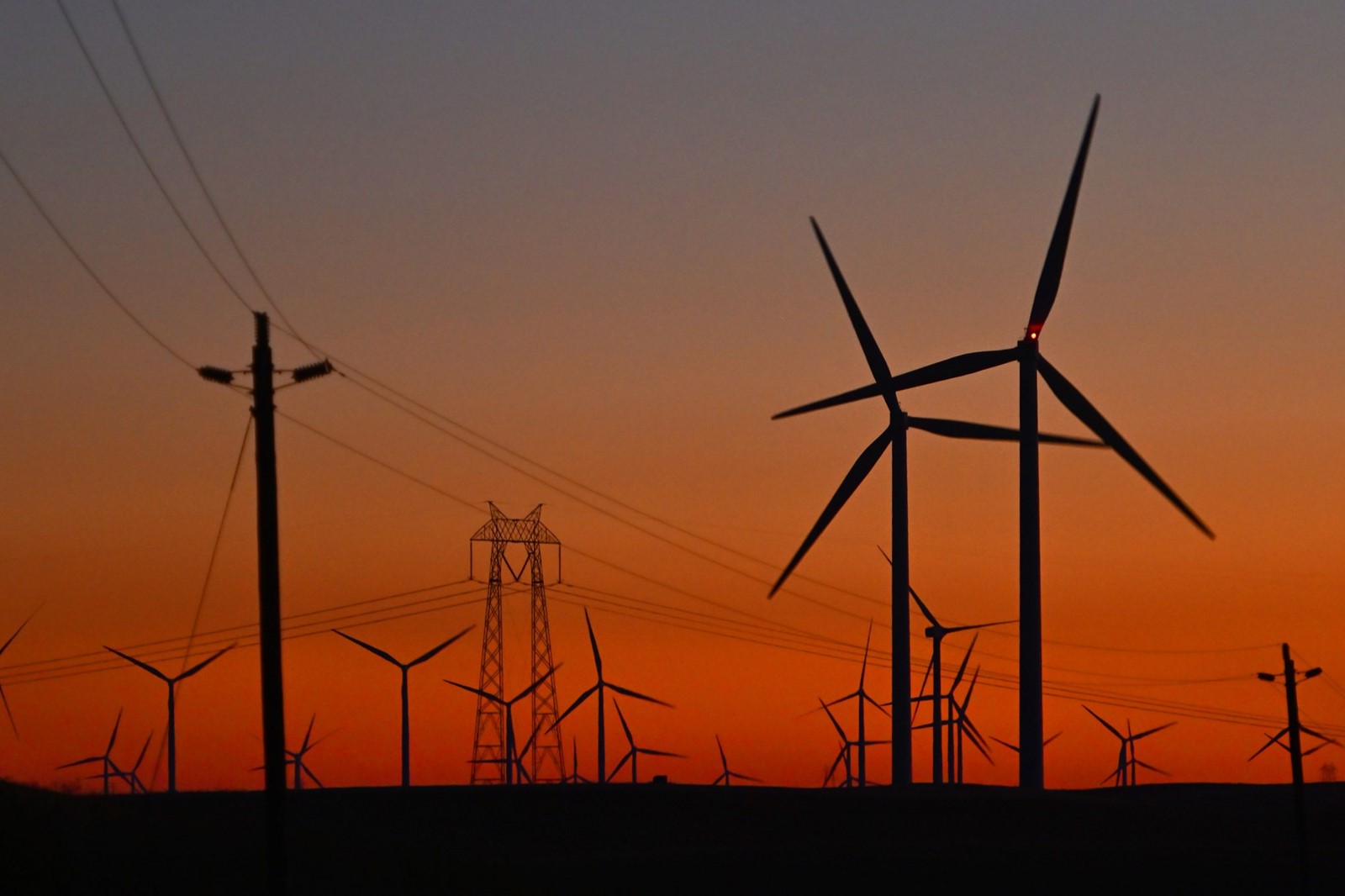
California has hit a new record for clean energy.
Solar, wind, hydropower and other carbon-free sources made up 67% of the state’s retail electricity supply in 2023, the most recent year that data is available, according to new statistics released Monday by the California Energy Commission.
The total is up from 2022, when it was 61%. It exceeds the prior record of 64%, set in 2019.
Under a state law signed by former Gov. Jerry Brown in 2018 aimed at reducing air pollution and greenhouse gas emissions that are contributing to climate change, California is required to reach 100% renewable and carbon-free electricity by 2045.
Solar, wind, geothermal, large hydropower, biomass and nuclear energy are allowed to count under the law.
“This is a major milestone on our journey to a 100% clean energy future” said David Hochschild, chairman of the California Energy Commission. “Two-thirds clean energy was considered mythology even 10 years ago. Alternative energy is now the wrong word to use for renewables. And we are just getting started. The momentum is profound.”
The new record comes as renewable energy is facing several headwinds.
Earlier this month, Republicans in Congress passed and President Trump signed a bill that removes and reduces many of the tax breaks, federal grants and other incentives that were put in place by President Biden to encourage states, private companies and homeowners to expand renewable energy and electric vehicles.
Trump also signed an executive order on July 7 directing the Treasury Department to review tax subsidies to renewable energy.
“Ending the massive cost of taxpayer handouts to unreliable energy sources is vital to energy dominance, national security, economic growth and the fiscal health of the nation,” Trump wrote.
Gov. Gavin Newsom called that approach, in which Trump continued long-running subsidies for oil and gas, a mistake.
“As the federal government turns its back on innovation and commonsense, California is making our clean energy future a reality,” Newsom said Monday in a statement. “The world’s fourth-largest economy is running on two-thirds clean power — the largest economy on the planet to achieve this milestone.”
California has some of the highest electricity costs of any state. The average retail electricity price in California in April was 31.77 cents a kilowatt-hour, according to the U.S. Department of Energy, nearly twice the national average of 17.45 cents. Only Hawaii (42.44 cents) and Connecticut (32.28 cents) were more expensive.
“Governor Newsom’s press release is a perfect example of political theater. He brags about a 67% clean energy milestone but ignores the real story,” said Steve Hilton, a Republican running for governor in 2026. “California families and small businesses pay the highest electricity prices in the nation, we have one of the highest poverty rates, and our economy is being choked by overregulation and soaring energy costs.”Polls show clean energy remains popular. In a poll last year by the non-partisan Public Policy Institute of California, 66% of California voters said they support the state’s law requiring 100% clean energy by 2045.
Hochschild said part of the reason for high electricity costs is wildfires. State regulators have required utilities like PG&E to bury powerlines in highly flammable areas to reduce fire risk, which can cost millions of dollars a mile.
Frank Wolak, a Stanford University energy economist, noted that clean energy mandates are a big reason Californians pay twice as much for electricity as people in Texas and other states.
“Renewable energy is great,” Wolak said. “But the burden often falls on people who are renting and living in apartment complexes. People who don’t own a house can’t put solar panels on the roof to lower their electricity bills.”
One of the main challenges is that the sun doesn’t shine at night and the wind doesn’t always blow.
To address that, California regulators have pushed utilities and other companies in recent years to build battery storage plants. The plants capture electricity generated by solar farms during hot parts of the day and then release it back onto the power grid at night after the sun goes down.
Battery storage has increased tenfold in the past five years in California, from 1,474 megawatts in 2020 to 15,763 megawatts now, according to the California Energy Commission. A megawatt is enough electricity to run 750 homes. California has been building battery storage faster than anywhere in the world except China.
But a major fire in January at one of the world’s largest battery storage plants, run by Texas-based Vistra in Moss Landing, has raised safety concerns about the technology and given rise to community groups opposing new plants in their neighborhoods.
Nevertheless, the California Energy Commission last month approved the world’s largest battery solar project, a huge new facility in Fresno County, the Darden Energy Project.
Many more will have to be built, Hochschild said. Electricity demand is steadily growing statewide due the growth in electric car sales — 25% of new car sales in California are now electric vehicles, the most of any state — along with the expanded demand from data centers needed for artificial intelligence.
The state will need 52,000 megawatts of battery storage by 2045, the energy commission estimates.
Hochschild said the Moss Landing plant was built five years ago using battery chemistry that is now being replaced by safer technology. And the facility was built by stacking thousands of lithium-ion batteries inside an old PG&E concrete building. New standards require each battery unit to be outside, separated from each other with sensors and alarms.
“I don’t believe there are safer battery standards anywhere in the world for what we require here,” Hochschild said. “I have to vote on all these projects. I will never vote to approve a battery storage project or any project that I feel wouldn’t be safe in my community or my house.”


 PREVIOUS ARTICLE
PREVIOUS ARTICLE
